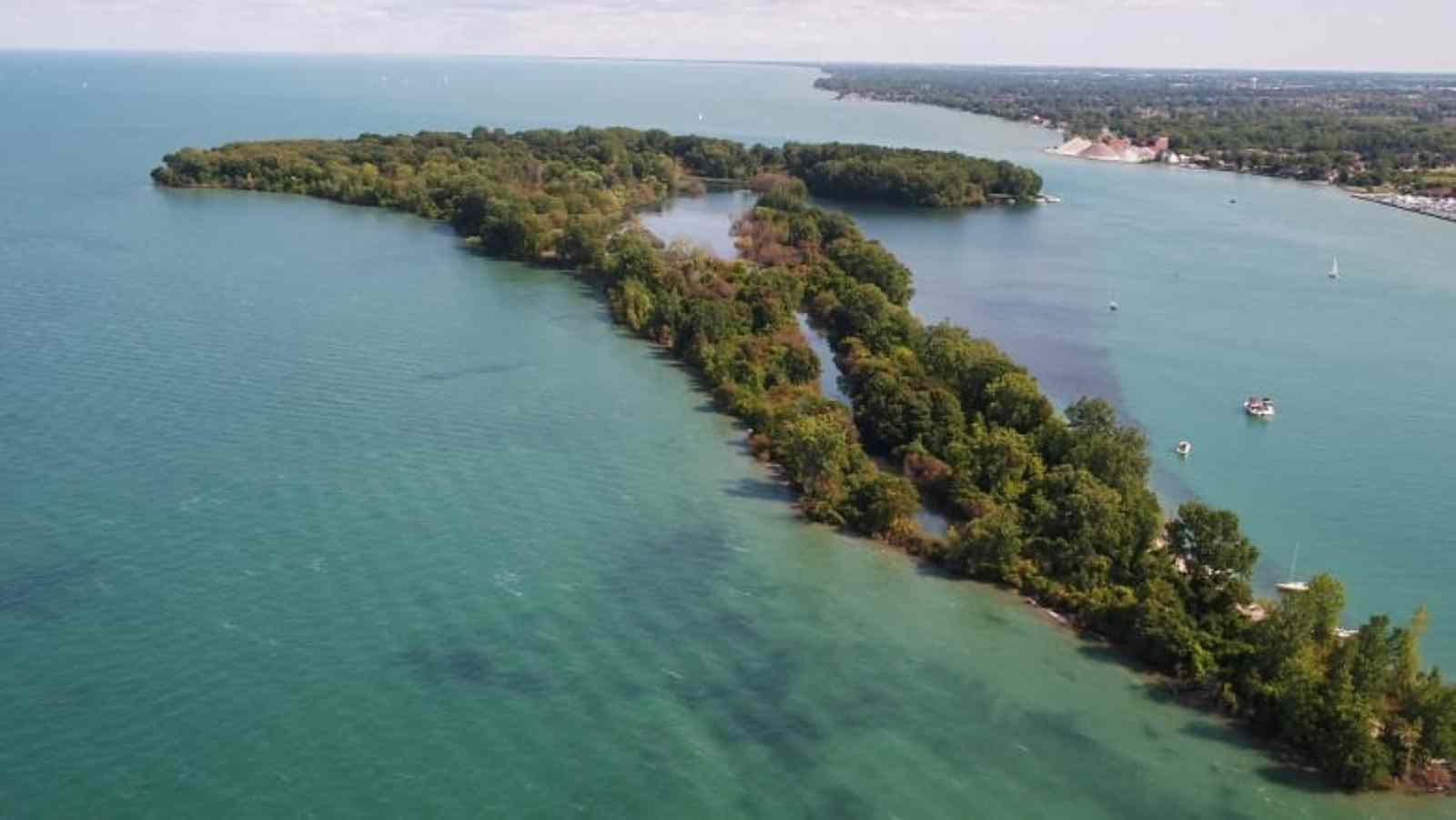Published February 5, 2020
Heart-shaped Lake St. Clair looks like it was just made to grace the front of a Valentine's Day card.
With Lake Huron to the north and Lake Erie to the south, Lake St. Clair is sometimes affectionately known as “the Heart of the Great Lakes” or “the sixth Great Lake”. Lake St. Clair is an important recreational, ecological, and economic part of the Great Lakes watershed.

The lake is a favourite place to go swimming, canoeing, and fishing. Every year, 1.5 million fish are caught in Lake St. Clair, and more than 4.5 million people in North America get their drinking water from this lake. It is also home to many plant, bird, and fish species.
Recently, we've been showing Lake St. Clair some tender loving care with two restoration projects underway.
Peche Island and Lakeview Park Restoration
Peche Island, located where the Detroit River opens up into Lake St. Clair, has been a refuge for endangered species for a long time. However, the area sees lots of large ship passing through, and the powerful waves created by ships have eroded the island over the years.
Urbanization and climate change have also damaged the island, causing it to shrink by 14 acres. In fact, this island is on our list of the top Great Lakes destinations you should see before they disappear.

Did You Know?
Through Swim Drink Fish, Essex Region Conservation Authority, Detroit River Canadian Cleanup, City of Windsor, and The W. Garfield Weston Foundation are working to restore the island by creating habitats nearby for Lake Sturgeon, Spiny Softshell Turtle, Northern Madtom, and the Channel Darter.
Swim Drink Fish has also recently partnered with Town of Lakeshore through The W. Garfield Weston Foundation to fund waterfront water quality improvements at Lakeview Park.
The Town of Lakeshore, Lakeview Park project will address issues like odour, overgrown vegetation and nuisance plants, and waterlogged or sunken debris. The project will improve the health of the many fish populations in the area, such as trout, walleye, bass, crappie, and perch. The project will also continue to monitor the area once the habitat restoration is completed.
Climate change in the Great Lakes
In the Great Lakes, climate change is producing extreme weather events, causing water temperatures and levels to rise, and creating optimal conditions for dangerous algae blooms. There are other issues that also affect the Great Lakes, such as invasive species and pollution from substances like road salt.

The Great Lakes need us now more than ever.
Hardworking citizen scientists have been sampling water in the Toronto Harbour since 2016. Great Lakes recreational water monitoring hubs like the one in the Toronto Harbour collect and share data about water quality with the public. The efforts of these dedicated volunteers also helps to gain insight into sources of pollution.
The best relationships are about give and take, and the Great Lakes watershed gives us so much. The Great Lakes are where we swim, drink, and fish. Having a place to go outdoors and connect with nature is vital for our physical and mental health, and us visiting and connecting with the lakes is important for the health of the lakes.

The region holds about 20% of the world’s freshwater, making these lakes the biggest surface freshwater system in the world. The lakes support millions of jobs. They give us hydroelectricity to power our homes. They provide water for drinking and washing. If you spend just one morning recognizing how much the Great Lakes give, you may be surprised.
When we examine our relationship with the Great Lakes, we must ask: are we giving as much as we take?
When you’re spreading the love on Valentine’s Day, make sure you save some love for our planet’s most important waters. There are many things you can do to help protect the Great Lakes and show them how much you care. And if you want to spend some quality time with the world's most important waters this Valentine's Day, you can find your date for Valentine’s Day 2020 on a Great Lake.
